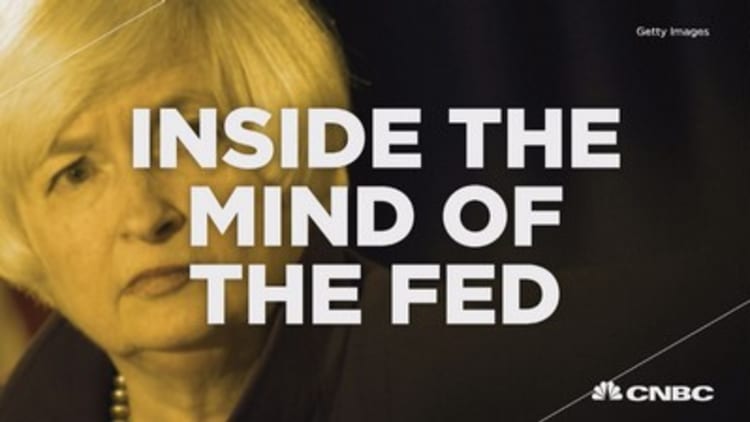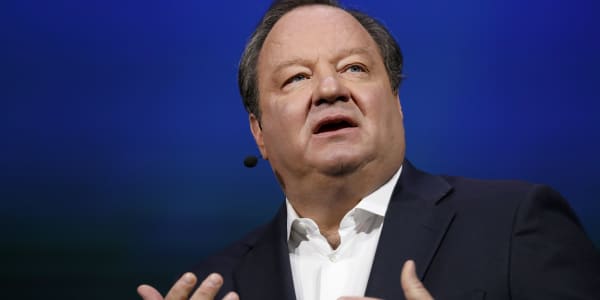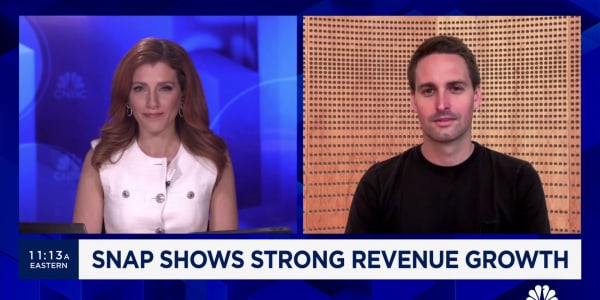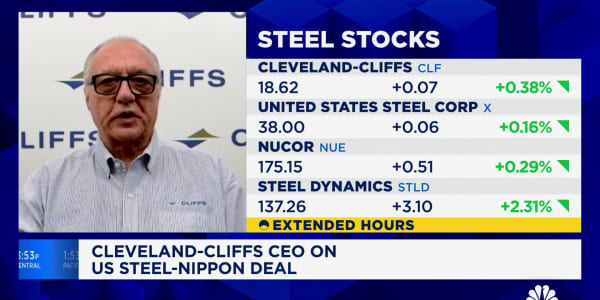
Investors can't be faulted for trying to figure out when and how quickly the Federal Reserve is going to move on interest rates.
Some of the recent speculation, though, seems to have gotten at least a bit overdone.
Recent chatter has gone so far as to suggest the Fed may only hike by 10 basis points, or 0.10 percentage points, in its first move after keeping its key rate near zero for the past nine years. In a CNBC.com report Monday, ANZ senior foreign exchange analyst Khoon Goh said the futures market actually has priced in such a move for September.
Forget what history says: In what has become the silly season for Fed speculation, everything seems to be on the table.
"Some ... go so far as to predict that the Fed will raise short-term rates by as little as 10 (basis points). Should such a small move occur, however, it would be the first one in history," Sam Stovall, U.S. equity strategist at S&P Capital IQ, said in a note. "It's never happened in the 179 rate moves since 1934."
Specifically, Stovall pointed out that the Fed has never, in its 101 moves on the discount rate or 78 on the Fed rate, cut or raised by something that wasn't divisible by 25.
But there's actually some data to back up the thought of a 10 basis point hike.
Read More Fed rate hike would 'crush' US housing: Analyst
A look at the CME Group's FedWatch monitor of fed futures expectations does indicate that the expectations for the rate is 0.25 percentage points in September. Given that the benchmark now is 0.14 percentage points, one could infer then that the market is pricing in a 0.10 percentage point hike.
However, the Fed target for the rate technically is 0-0.25 percentage points. Thus, the rate could simply drift there on its own without any intervention from the Fed's Open Market Committee.
The bigger point may be this: That we've gone this far down the road with FOMC analysis is probably a better indicator of just how overdone concern is about the Fed moving from zero to, well, a little more than zero.
"Even if the Fed moves by (September), it has already indicated that this will be a truncated tightening cycle, and that is more important than guessing the timing of the initial volley (unless, of course, you make your livelihood trading Fed funds futures contracts)," David Rosenberg, strategist and senior economist at Gluskin Sheff, said in his daily market note Tuesday.
Read MoreSeptember rate hike coming? Not so fast...
While there are plenty of players in the Fed speculation game, the idea of an incremental move first was raised by Goldman Sachs, which in March entertained the "small chance" that the FOMC might use its first tightening move to raise by just 0.125 percentage points, or an eighth of a point.
For the record, CME traders believe the first real hike, with a 54 percent chance, won't happen until December.
That, perhaps not coincidentally, is when Goldman's economists now see the Fed moving, and with a full 25 basis point increase. A recent note featured an almost comical bevy of considerations (conjuring Harry Truman's desire for a one-armed economist who can't say "on the other hand") that finally settled with the futures market's consensus.
"On balance, we believe that recent Fedspeak has been broadly consistent with our expectation for a hike in December. That said, many Fed officials themselves do not appear to have high conviction views about September vs. December at this time," Goldman economist Kris Dawsey wrote. "Overall, we think that risk management considerations, continued concern about global developments, a prudent desire for the first hike after seven years of zero interest rates to be almost fully anticipated by the market, and persistently subdued realizations on core inflation will ultimately carry the day and result in a December hike."






